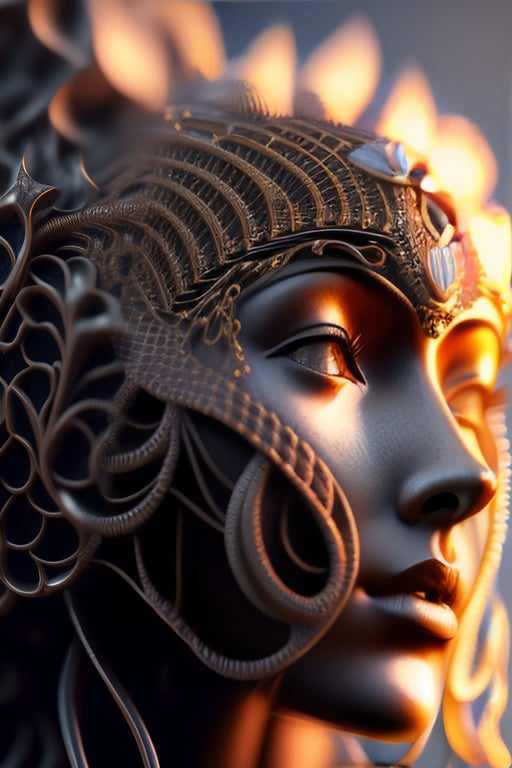The Power of Symbolism in Myths and Legends
The Power of Symbolism in Myths and Legends
Symbols in myths and legends have been used for centuries to convey universal themes and ideas. These symbols often have multiple layers of meaning, and can be interpreted in different ways by different cultures or individuals, depending on their personal experiences and beliefs. The power of symbolism in myths and legends is far-reaching and multifaceted, and can be seen in their use as a tool for personal growth, as a way to cope with difficult emotions or experiences, and as a means to explore modern-day challenges.
Symbols in myths and legends can represent universal themes, evoke deep emotions, connect people across cultures, and serve as a way to explore the human psyche. Carl Jung, a prominent psychologist, believed that symbols in myths and legends were manifestations of the collective unconscious, representing universal archetypes that are part of the human experience. By examining the symbols in myths and legends, we can gain a deeper understanding of ourselves and our place in the world.
Furthermore, symbols in myths and legends can serve as a way to connect people across different cultures and time periods. Many symbols are found in myths and legends from around the world, such as the symbol of the serpent or the symbol of the sun. These shared symbols can create a sense of unity and shared history among people from different cultures.
Symbols in myths and legends can also serve as a teaching tool. Many myths and legends were used to pass down moral lessons or to teach important cultural values. For example, the Greek myth of Icarus, who flew too close to the sun and fell to his death, teaches the importance of moderation and avoiding hubris.
Moreover, symbols in myths and legends can be used as a tool for personal growth and transformation. By identifying with the hero archetype or other symbols in myths and legends, individuals can use these stories as a way to overcome personal challenges and achieve their goals. For example, the story of Hercules, who overcame many challenges to achieve godhood, can inspire individuals to persevere in the face of adversity and achieve their own personal transformation.
Symbols in myths and legends can also be a way to cope with difficult emotions or experiences. Many myths and legends contain themes of death, loss, and tragedy. By identifying with these stories and their symbols, individuals can find comfort and meaning in their own experiences of grief or trauma. For example, the Egyptian myth of Osiris, who was killed and resurrected, represents the cycle of life, death, and rebirth. This story can provide comfort and hope to individuals who have experienced loss or are struggling with their own mortality.
The power of symbolism in myths and legends is not limited to traditional stories. Modern myths and legends, such as superhero stories or urban legends, also use powerful symbols to convey universal themes and ideas. These stories can provide a way for individuals to explore modern-day challenges and issues in a meaningful way.
In conclusion, the power of symbolism in myths and legends is a testament to the enduring relevance of these stories. Symbols in myths and legends can inspire personal growth, provide comfort in difficult times, and serve as a way to explore modern-day challenges. By understanding the symbolism in myths and legends, we can gain a deeper appreciation for these stories and use them as a tool for self-discovery and personal transformation.
The Power of Symbolism in Myths and Legends: Exploring the Hidden Meanings
Myths and legends are rich sources of symbolism, and their symbols have the power to reveal hidden meanings and deep truths about the human experience. The use of symbols in myths and legends can help us understand our own lives, our place in the world, and the mysteries of the universe.
One of the most important aspects of symbolism in myths and legends is that symbols can represent multiple layers of meaning. A symbol in one story can represent something entirely different in another story, depending on the context and the cultural or historical background. For example, the dragon is a powerful symbol in many cultures, representing strength, power, and sometimes even wisdom. However, in other cultures, the dragon can represent chaos, destruction, or evil.
The symbolism in myths and legends can also help us understand the universal themes that are present in many stories from different cultures and time periods. For example, the myth of the hero who embarks on a dangerous journey, faces great challenges, and ultimately triumphs over evil is a common theme found in myths and legends from around the world. This theme represents the universal human experience of facing challenges and overcoming adversity, and it speaks to the deep need we all have for meaning and purpose in our lives.
Moreover, the symbolism in myths and legends can reveal the hidden truths about our own lives and our place in the world. For example, the myth of the phoenix, which is reborn from its own ashes, represents the cyclical nature of life and the idea that new beginnings can arise from destruction or endings. This story can provide comfort and hope to individuals who are facing difficult transitions or losses in their lives.
Symbols in myths and legends can also help us explore the mysteries of the universe and our place in it. Many ancient myths and legends were attempts to explain the natural world and the forces that shape it. For example, the myth of Persephone, who was abducted by Hades and forced to spend half of the year in the underworld, was used to explain the changing seasons and the cycle of life, death, and rebirth. By examining the symbols in these stories, we can gain a deeper understanding of the natural world and our relationship to it.
Furthermore, the symbolism in myths and legends can be used as a way to understand the human psyche and the complex emotions and experiences that we all face. For example, the myth of Narcissus, who fell in love with his own reflection and died from his obsession, represents the dangers of excessive self-love and the importance of balance and humility. This story can provide insight into the human experience of love, desire, and the search for identity.
In conclusion, the power of symbolism in myths and legends is vast and varied, and its use can help us understand ourselves, our place in the world, and the mysteries of the universe. By examining the symbols in these stories, we can gain a deeper understanding of the universal themes and hidden truths that are present in many cultures and time periods. The symbols in myths and legends have the power to transform our lives, inspire us to greatness, and provide comfort and hope in difficult times.
========================================================================
Keywords = Myths, Legends, Symbolism, Hidden Meanings, Universal Themes, Human Experience, Natural World, Psyche, Emotions, Identity, Culture, History, Power of Symbols, Ancient Myths, Archetypes, Philosophy, Spirituality, Folklore, Interpretation, Mythological Creatures, Heroes, Adventure, Transformation, Mythical Beings, Gods and Goddesses, Rituals, Folktales, Oral Tradition, Storytelling, Interpretation, Allegory, Metaphor, Significance, Psychology, Anthropology, Comparative Mythology, Sacred Texts


Comments
Post a Comment